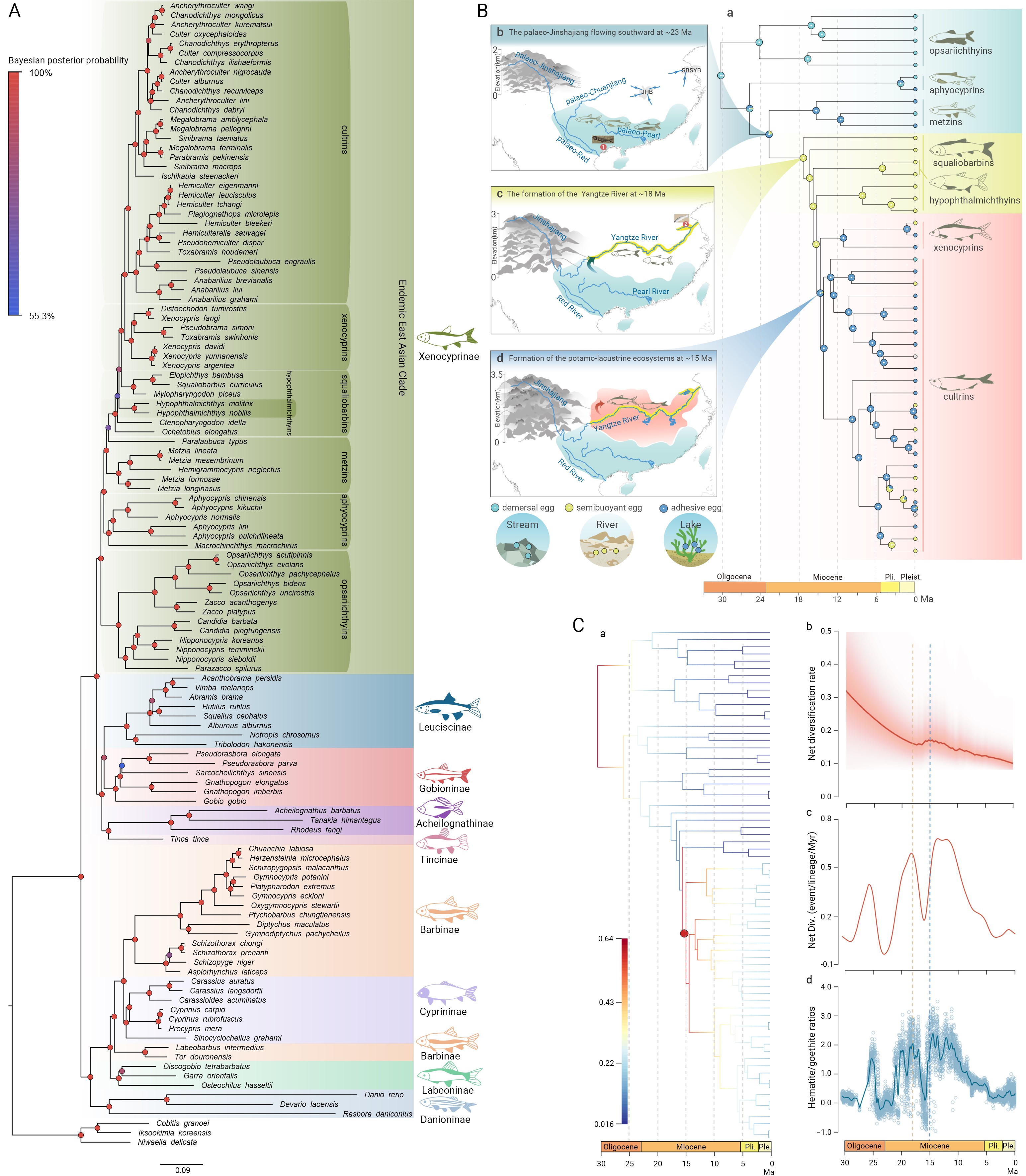
Newsroom
Phylogenetic and Fossil Evidence Provide New Insights into Co-evolution of Yangtze and Endemic Cyprinids
The origins of the modern Yangtze River and evolution of drainage systems in South and East Asia were linked to Neogene uplift of the Qinghai-Tibetan Plateau and onset of the modern Asian monsoon system. However, deriving an accurate understanding of the spatiotemporal evolution of the Yangtze River system has been challenging.
A growing scientific consensus suggests that the geomorphological process of river capture contributes substantially to evolutionary diversification in freshwater fishes. In turn, reconstruction of the phylogeographic dynamics of freshwater fishes can help constrain the spatiotemporal evolution of the river system. To date, the historical distribution and dispersal of endemic cyprinids across East Asia or the possible relationship between the spatiotemporal development of the Yangtze River and the evolution of egg types of endemic East Asian cyprinids has not been addressed.
A research group led by Prof. XIE Ping from the Institute of Hydrobiology (IHB) of the Chinese Academy of Sciences recently reconstructed the increased spatiotemporal resolution for the co-evolutionary histories of the Yangtze River and its biodiversity and highlights biological evidence concerning the geomorphological dynamics of the Yangtze River. This study was published in The Innovation.
In this study, based on the mitochondrial phylogenomics analysis of Cyprinidae calibrated by 15 fossils, the researchers inferred the diversification dynamics, ancestral distribution and egg types of the endemic East Asian cyprinids, and discussed the age at which the southwards-flowing palaeo-Jinshajiang first connected with the middle reaches via the First Bend and formed the Yangtze River ecosystems, including the potamo-lacustrine ecosystems in the middle and lower reaches.
The researchers found that prior to the formation of the Yangtze River, the ancestors of endemic East Asian cyprinids were confined to southern East Asia between the palaeo-Pearl and palaeo-Red Rivers during the Oligocene. At that time, the palaeo-Jinshajiang flowed southwards to the South China Sea roughly along the course of the modern Red River.
The researchers also discovered that by ~18 Ma, the endemic East Asian cyprinids dispersed into the Yangtze River basin and evolved into fishes laying semibuoyant eggs, indicating that a modern Yangtze riverine ecosystems had formed around the Oligocene-Miocene boundary (~18–23 Ma) in response to regional surface uplift and large strike-slip tectonics and climatic changes.
By ~15 Ma, the endemic clade of East Asian cyprinids evolved into fishes spawning adhesive eggs again, coinciding with a rise to a peak in the net diversification rate of this endemic clade and a high intensity of the East Asian summer monsoon. This indicates that the Yangtze River system probably had developed into a potamo-lacustrine ecosystem with high productivity by the middle Miocene.
Based on the fossil-calibrated phylogeny of the endemic clade of East Asian cyprinids, this study constrains the ages of important events in the geological and ecological evolution of the Yangtze River, providing a new paradigm for the reconstruction of the Yangtze’s geological and life evolution.

Phylogeny of Cyprinidae and diversification history of endemic East Asian cyprinids (Image by IHB)
(Editor: MA Yun)